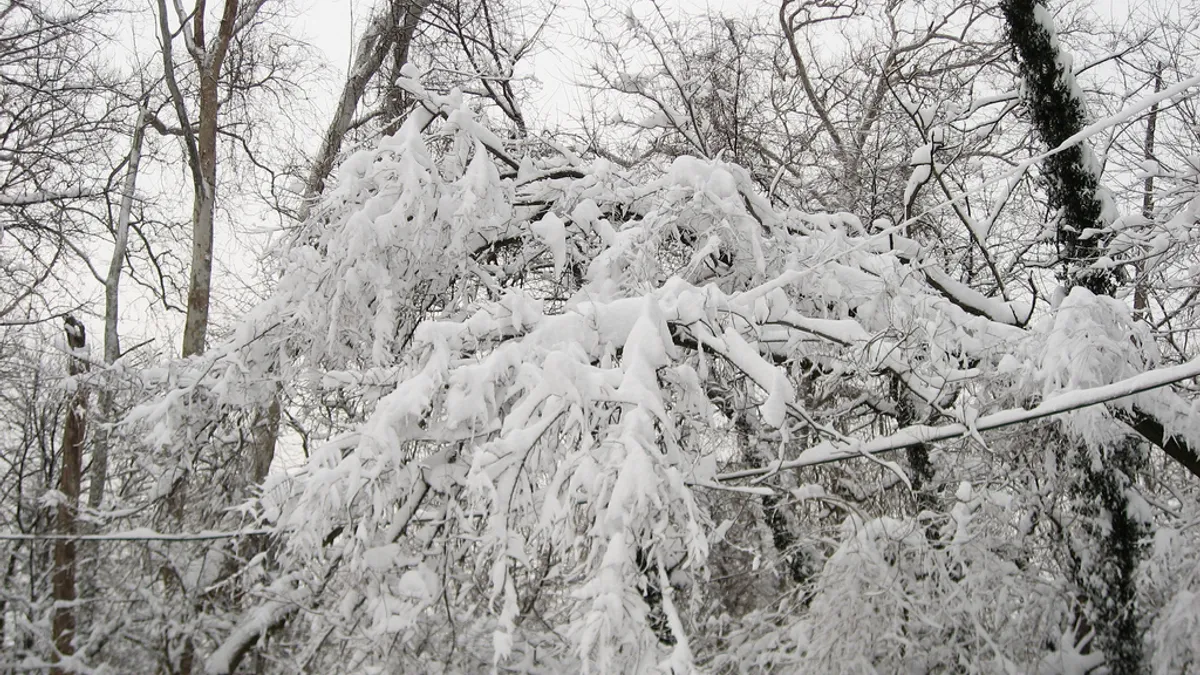As with hurricane season, winter brings the threat of storms and unique safety issues. Yet many of the dangers of winter weather are known quantities. That can make preparation easier compared to what is required for hurricanes, but planning for winter is still critical.
We asked the experts what contractors can do now so work can stay on schedule when winter weather hits as well as to ensure workers will be protected from potential cold-induced injuries and illnesses.
Protecting your people
Few would disagree that worker safety should be the top priority on job sites, regardless of the weather. It should come as no surprise, then, that OSHA has prepared a guide to prevent slips and falls caused by icy, wet conditions, as well as for the prevention of winter-related injuries due to cold stress, such as frostbite and hypothermia.
Marc Ciaramitaro, director of field operations at Windover Construction, in Beverly, MA, said even though hot weather can be just as dangerous for workers, OSHA and other groups seem to take cold weather more seriously. "I think [workers] feel it more," he said. "Working in the cold is more uncomfortable."
For example, fingers and hands aren't as nimble in the bitter cold. And although workers might sweat in warmer weather, they don't see and feel the signs of heat exhaustion or heat stroke as readily as they do cold stress, he said. Windover gives its employees winter hats, high-visibility jackets, work gloves and rain gear as the weather warrants.
If a job doesn't yet have a protected, enclosed space where employees can gather when the temperature begins to drop, Windover provides space in a finished portion of a building, in an office trailer or elsewhere on the site where workers can warm up.
Michael Sanchez, chief of construction operations at Shawmut Design and Construction, in Boston, said the company briefs workers at weekly safety meetings on how to take extra precaution in winter weather conditions. The company will hold additional, ad hoc meetings if it expects extreme weather. Shawmut also provides winter gear for its employees.
At Windover, routine toolbox talks begin incorporating the subject of winter job site dangers and cold hazards sometime in November, before serious winter weather kicks into high gear.
Protecting your schedule
Bitterly cold weather is no surprise in the nation's northern climes. Unless a weather event outside the norm is expected, however, companies there shouldn't expect owners to add days to the schedule in the event of a snowstorm. That also holds true for contractors who find themselves working in the midst of winter weather when they shouldn't be, according to Heidi Hennig Rowe, a partner in the construction law group at Schiff Hardin in Chicago.
A contractor may experience delays early in a project that cause it to be outside doing tasks such as concrete work, for example, during the dead of winter when it should already be working on the structure. What about that change order for winter additives? In that scenario, the owner would be well within his or her rights to deny the claim.
"If [that] contractor had been on schedule, the building would have been closed by the time winter came around," Hennig Rowe said. "The contractor should account for typical weather in the schedule."
That means a contractor can pretty much forget about gaining extra schedule time because important project personnel like subcontractors and employees didn't want to drive to the job on the icy streets of Syracuse, NY. But if snow starts to fall in Miami, then it's time to negotiate an extension. "The contractor only gets relief [in the case of] abnormal conditions that could not have been anticipated," Hennig Rowe said.
Proper planning can help contractors avoid most of these situations.
That starts with looking at the average winter rain and snowfall amounts where the project is located and building that into the schedule, Sanchez said. Additional material costs should also be considered. Those include tarps to protect buildings that haven't been dried in, extra lumber to build heated temporary tents or structures, furnace and other heater rentals, and the most significant winter-related cost: the electric and natural gas bills to keep the heaters running.
Contractors can also expect a drop in productivity of approximately 10% to 15% that must be calculated into the job's cost, Sanchez said.
Getting started early
For Windover and Shawmut, the winter planning stage is already wrapping up.
"Here it is October, and we've already ordered heaters for projects we haven't started building," Ciaramitaro said. "[Winter equipment and materials] are ordered so when the jobs start, it's there if we need it." If companies haven't ordered these items by now — for example, concrete blankets and heaters, temporary furnaces for inside buildings — they'll most likely encounter delays just trying to locate the most in-demand winter items, he said.
Sanchez agrees. "It should be a matter of routine by now," he said. "Every [Shawmut] job with an exterior component is ready right now."
Ciaramitaro said Windover has ordered equipment for jobs that don't even have drawings yet. "We just know we'll need it," he said.
The steep costs associated with weatherizing projects make planning ahead essential.
And the more detailed the contract is, the less likely there is to be any ambiguity about who pays for what when bad weather hits. "Both parties should be clear who's bearing that risk," said Kenneth Roberts, partner and construction group practice leader at Schiff Hardin.
And the practice of working off only a handshake? Not a good idea. "Sometimes clients have those conversations, but [they haven’t] made [their] way into the contract," Hennig Rowe said. "It helps to have sophisticated legal counsel to guide the process."





















